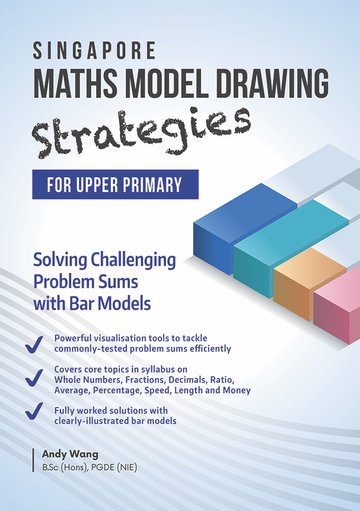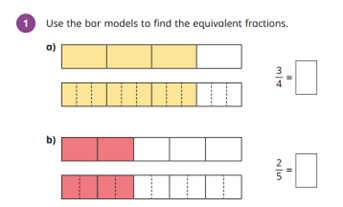Top tips for mastering bar model drawing techniques in math instruction
Exploring Bar Design Illustration Techniques: A Comprehensive Guide to Visualizing Mathematics Concepts
Bar design drawing techniques serve as a beneficial resource for both instructors and trainees in envisioning mathematical concepts. These designs simplify intricate numerical partnerships, assisting in the understanding of enhancement, multiplication, reduction, and department. This guide outlines efficient approaches for carrying out bar models, cultivating active interaction and real-world connections. As readers discover the functional applications and training pointers, they will certainly uncover how these strategies can change their approach to mathematics.
Understanding the Fundamentals of Bar Design Drawing
Bar model attracting works as an effective aesthetic tool in maths, facilitating the understanding of problem-solving strategies and mathematical partnerships. This technique includes standing for numbers and their partnerships through rectangular bars, making it much easier to imagine procedures such as enhancement, department, reproduction, and reduction. Each bar's length represents a certain worth, allowing learners to compare amounts and recognize proportions clearly.
To develop a bar model, one begins by recognizing the problem's vital components, frequently simplifying into parts that can be aesthetically stood for. As an example, in a simple enhancement problem, 2 bars can be attracted, with their sizes standing for the addends. The combined length illustrates the amount. Furthermore, bar models can be adjusted for a lot more complicated problems, including portions and ratios, by readjusting the bars appropriately. Mastering these essentials lays a strong foundation for efficient analytical and deeper mathematical understanding.
Advantages of Utilizing Bar Models in Mathematics
Making use of bar versions in mathematics uses many advantages that improve understanding and understanding. These graphes help trainees in realizing intricate principles by breaking them down right into convenient components. Bar versions supply a clear framework for showing connections between numbers, making abstract ideas more concrete. They promote a much deeper understanding of mathematical procedures and promote analytic by permitting learners to visualize the information they are dealing with.
Bar designs sustain the advancement of crucial assuming abilities, as pupils must assess and translate the aesthetic info to draw verdicts. This approach motivates active engagement with the material, enhancing retention and mastery of mathematical principles. By cultivating a strong structure in visual proficiency, bar designs empower students to approach numerous mathematical obstacles with self-confidence. On the whole, the combination of bar versions right into mathematics education and learning shows useful in cultivating both understanding and logical capacities amongst trainees.
Applying Bar Versions to Enhancement and Reduction
Bar models function as a reliable tool for aesthetically representing addition and subtraction troubles. By highlighting the connection in between numbers, they boost understanding and assist in analytical. In enhancement, real-life applications of these designs can aid learners grasp mathematical principles in functional contexts.
Standing For Addition Visually
When students experience addition and reduction troubles, aesthetic aids can significantly improve their understanding of these procedures. Bar designs work as effective devices for representing addition. By splitting a rectangular shape right into segments that match to the numbers involved, pupils can envision the relationship between the quantities. If a student needs to add 3 and 5, they can create a bar separated into two areas: one section standing for 3 and the various other representing 5. This clear representation not just streamlines the enhancement procedure however additionally reinforces the idea of incorporating quantities. As students adjust these aesthetic help, they establish a much deeper understanding of enhancement, leading to improved analytic abilities and greater confidence in their mathematical capacities.
Subtraction With Bar Models
Although subtraction is often perceived as a much more intricate operation than addition, bar designs can properly clarify this process for pupils. By visually representing the amounts involved, pupils can better comprehend how numbers connect to one another. In a bar model for reduction, one bar stands for the total, while another suggests the quantity being deducted. This visual distinction helps trainees grasp the principle of "eliminating." For example, if a bar shows 10 devices, and an additional bar standing for 4 units is gotten rid of, trainees can quickly see that 6 units continue to be. This technique not just fosters understanding of subtraction but also help in establishing analytical abilities, permitting students to imagine their mathematical thinking and improve their total understanding of mathematical principles.
Real-Life Application Instances
Recognizing subtraction via bar designs lays a structure for applying these techniques in real-life circumstances. In different contexts, such as budgeting or purchasing, people can envision just how much cash continues to be after expenses. For instance, if an individual has $50 and invests $20, a bar version can represent the complete quantity and the spent part, highlighting that $30 is left. Furthermore, moms and dads can make use of bar designs to assist kids recognize the number of more products require to be included in finish a collection, such as having 3 apples and requiring five. This graph simplifies complex troubles, promoting comprehension and retention. Eventually, bar models offer as reliable devices in everyday decision-making, enhancing mathematical understanding in functional situations.
Picturing Multiplication and Department With Bar Models
In discovering the application of bar designs for reproduction and department, it is important to grasp their fundamental ideas. Building multiplication models permits learners to visualize connections in between numbers, while reliable department approaches can be shown through these aesthetic aids. This technique boosts understanding and problem-solving abilities in mathematics.
Understanding Bar Designs
Bar designs work as a powerful visual tool for highlighting the concepts of multiplication and division. They allow students to represent mathematical relationships in an organized style, facilitating a much deeper understanding of these operations. In reproduction, bar versions show groups of equal size, enabling people to imagine the overall quantity when incorporating these teams. On the other hand, in division, bar models assist illustrate just how a total amount is divided right into smaller, equivalent components, clearing up the concept of partitioning. By utilizing these aesthetic help, trainees can comprehend the underlying concepts of multiplication and department better. This technique not just enhances comprehension yet likewise sustains problem-solving abilities, making bar models an indispensable possession in mathematical education and learning.
Creating Multiplication Models
Creating reproduction versions making use of bar diagrams uses a clear method for picturing the process of multiplication. These versions allow students to represent reproduction as groups of equal parts, making abstract ideas a lot more concrete. For circumstances, to illustrate (3 times 4), a trainee can draw one bar divided right into 3 equivalent sectors, each representing four systems. In addition, creating a 2nd bar with the exact same length strengthens the understanding of repeated enhancement, as each segment matches to one group. This visual depiction not only help in comprehending multiplication but also enhances problem-solving skills. By utilizing bar models, pupils can better understand relationships in between numbers and create a robust foundation for extra intricate mathematical concepts, bring about enhanced self-confidence in their capabilities.
Picturing Department Methods

Fixing Word Problems Using Bar Version Techniques

As an example, in a trouble entailing addition and reduction, pupils can attract separate bars for each quantity and afterwards manipulate them to find the solution. This process not only makes clear the issue however also fosters a deeper conceptual understanding. Additionally, bar models can be adapted for different sorts of word troubles, making them functional throughout different mathematical topics. Inevitably, making use of bar versions can substantially boost students' analytical skills by offering a clear visual path to come to the appropriate response.
Integrating Bar Versions in Various Math Topics
Bar models can be seamlessly integrated right into different mathematics subjects, enhancing students' understanding of principles beyond fundamental math. In important source algebra, these visual tools aid in standing for equations and inequalities, enabling students to visualize relationships in between variables. When dealing with geometry, bar versions can highlight the residential or commercial properties of shapes and spatial reasoning, assisting trainees realize concepts like area and boundary successfully. In statistics, bar models facilitate the analysis of information collections, permitting trainees to contrast quantities and identify fads visually. Additionally, integrating bar designs within measurement topics help in recognizing units and conversions by supplying a substantial representation of amounts. By utilizing bar models throughout various mathematical locations, teachers can foster a much deeper comprehension of complex ideas, consequently boosting analytic skills and promoting vital thinking (bar model drawing techniques). This convenience shows the energy of bar designs as a foundational device for trainees in their mathematical trip
Tips for Mentor Bar Designs Properly
Integrating bar designs right into training methods calls for thoughtful methods to optimize their effectiveness. Educators needs to begin by presenting bar models with basic, relatable instances that students can easily understand. This assists to build confidence and familiarity with the concept. Gradually raising the intricacy of problems allows students to apply their skills progressively. Additionally, instructors ought to urge trainees to produce their very own bar models, advertising energetic engagement and ownership of their understanding.
Integrating collaborative activities can also improve understanding, as students go over and solve problems in teams. Continual comments is vital; instructors must offer constructive discourse on students' bar design representations to lead improvement. Ultimately, linking bar versions to real-life situations reinforces their importance, helping trainees see the functional applications of their mathematical abilities. By implementing these methods, teachers can successfully harness the power of bar designs in their maths instruction.
Regularly Asked Questions
Can Bar Versions Be Utilized in Other Subjects Besides Math?
Bar models can certainly be made use of in various topics past math. They successfully highlight concepts in scientific research, social researches, and language arts, helping to aesthetically stand for connections, processes, and ideas for improved understanding throughout self-controls.
What Age Is Ideal Suited for Discovering Bar Versions?
Bar models are best fit for youngsters ages 7 to 12, as they create concrete thinking skills during this period (bar model drawing techniques). At this age, trainees can properly grasp abstract ideas with aesthetic depiction and problem-solving techniques
Are There Digital Equipment for Creating Bar Designs?

Exactly How Can I Analyze Student Recognizing of Bar Models?
Reviewing trainee understanding of bar models can entail quizzes, empirical evaluations, and group conversations. Teachers could likewise assess trainees' completed designs and their ability to describe their reasoning, making certain a detailed examination of comprehension.
What Prevail Mistakes When Making Use Of Bar Models?
Common errors when using bar designs consist of misrepresenting amounts, failing to precisely classify bars, hop over to here confusing enhancement and subtraction, overlooking to make use of consistent ranges, and overlooking the value of clear aesthetic separation in between various elements.
In addition, bar versions can be adjusted for more complicated troubles, including fractions and proportions, by adjusting the bars appropriately. Reduction is often perceived as a much more intricate operation than addition, bar models can successfully clarify this procedure for pupils. In a bar model for reduction, one bar stands for the total amount, while another shows the amount being subtracted. If a bar reveals 10 units, and an additional bar standing for 4 units is removed, trainees can quickly see that 6 devices continue to be. When separating a total into equal groups, students can draw a long bar to represent the entire and after that section it into smaller bars that suggest each group.